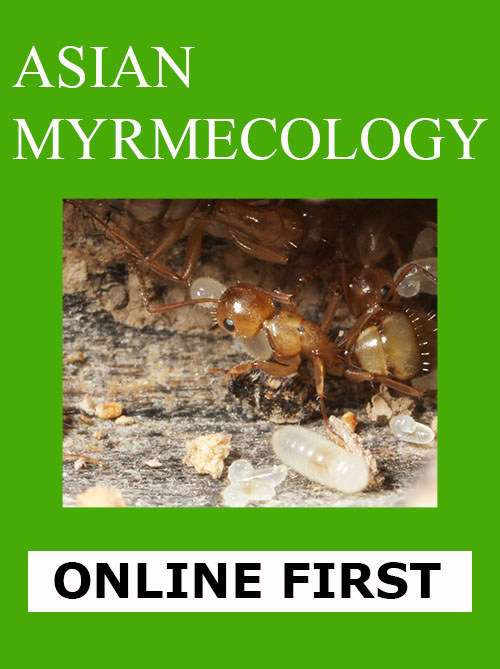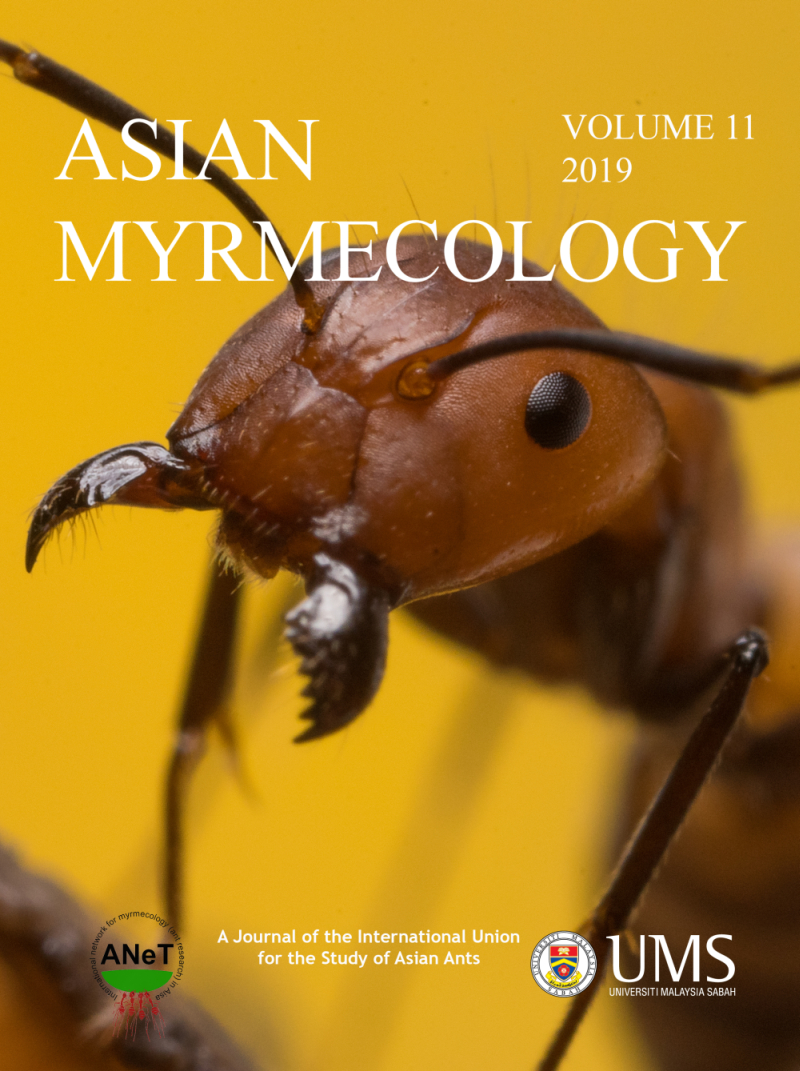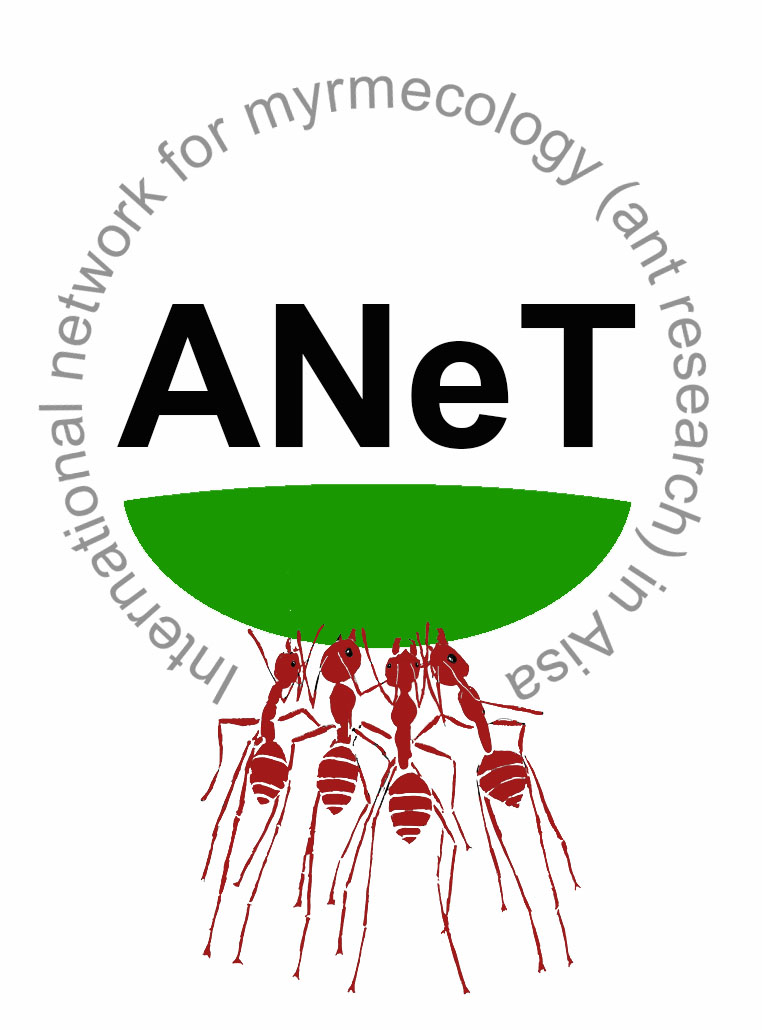ASIAN
MYRMECOLOGY
Image: François Brassard
online first (online version of paper published before print issue)
DOI: 10.20362/am.012002
Asian Myrmecology 12: e011002 (1-16)
article first published online: 13/September/2020
Colony composition, arthropod egg predation, and antennal structure of the ant Discothyrea sauteri (Hymenoptera: Formicidae)
KEIICHI MASUKO*
Abstract:
In an evergreen, broadleaf forest in central Japan, we collected 21 colonies of the cryptic ant, Discothyrea sauteri, which nests in small cavities in the soil (ca. 100 mm depth), rotting logs, and dead branches lying on the forest floor. The largest colony contained 132 workers, and one third of the collected queenright colonies were functionally polygynous, as revealed by dissection of the queens. Ant nests collected between April and November contained many globular, arthropod eggs. These eggs did not hatch in the laboratory, but we concluded that they are spider eggs, because some colonies nested in woven silk egg-sac structures and many others nested in cavities lined with silk filaments. Moreover, SEM observations showed strong similarities of these silk filaments to those of spider egg sacs. The extremely enlarged terminal segment of the antennal funiculus, the antennal club, which characterizes Discothyrea, has a group of short, hollow sensilla near its end. As these sensilla firmly contact the surface of globular prey eggs when ants hold them, the antennal shape and the distribution of these sensilla may be related to lifting a prey egg using the antennae.
Keywords:
Polygyny, Japan, spider, sensilla
Get PDF (6.59MB):
Biological Laboratory, Senshu University, 2-1-1 Higashimita, Tama-ku, Kawasaki, 214-8580 Japan
*Corresponding author: kmasuko@isc.senshu-u.ac.jp



